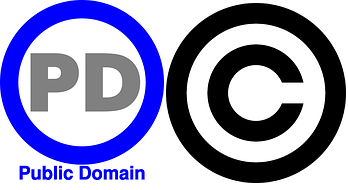
When I first started writing these blog posts, I was a little nervous about violating copyright protections regarding images. However, as I began searching for images, it became clear that there were easy ways to find superb images without risking copyright infringement. Making your own images, finding public domain databases, and contacting organisations for permission are all simple ways to gain access to a wide variety of visual material. Here are three options that can help anybody looking for images to find high quality materials without any legal difficulties.
1. You have control over images you make yourself.
Perhaps the easiest way to avoid copyright restrictions is to make your own images rather than relying on those made by someone else. Your own photographs, art or written records belong to you and so you have freedom to use them. However, if your images contain pictures of other people, or of objects belonging to other people, you definitely should ask their permission before using the images. Be courteous and explain to them what the purpose of the picture will be and only proceed in using it if they agree to its use.
2. Public domain image databases are available and can be very useful.
If you need an image for a project, public domain image databases are an excellent resource to find what you are looking for. These databases contain images that do not have copyright restrictions and have been posted online to allow anyone to use however they please. These range from general collections like Pixabay which contains free images on a variety of subjects to more specialised collections like the British Library’s collection of illustrations from historic books. Starting your search at one of these databases is an excellent way to find useful art or graphics.
Wikipedia has an excellent list of free image databases.
3. If you need to use an image belonging to someone else, be sure to ask permission
Sometimes, however, you are looking for a very specific image that is not available in a free database and requires access to copyrighted material. I encountered this situation myself when I came across an image of Robert Turney taken by Carl Van Vechten in the Beinecke Rare Book and Manuscript Library at Yale University. In a situation like this, you should contact the individual or organisation that has custodianship over the image, which in my case was the Van Vechten Trust. Send an email clearly explaining how you want to use the image and for what purpose. If they respond in the affirmative and give you permission to use the image, there will often be some conditions attached to the use, such as keeping the picture unaltered and attributing it to the source. Be sure to follow the terms that they have set out in your usage of the image.
By following the three steps above, you should have access to a vast array of images that will help you find the art or graphic you need.
For more detailed information on copyright laws for photographs and images in Canada, you can see this website.
